As a woman who has personally experienced the distressing effects of hair loss caused by shampoo and overwashing, I understand firsthand the concerns and uncertainties that arise when it comes to maintaining healthy locks.
Our hair is not just a physical attribute; it’s a reflection of our identity, confidence, and self-expression.
When I noticed my once-vibrant tresses thinning and becoming lackluster, I couldn’t help but wonder: could shampoo be the culprit?
In my journey to unravel the mysteries surrounding shampoo-induced hair loss, I embarked on a quest for knowledge, delving deep into research, consulting experts, and exploring alternative hair care approaches.
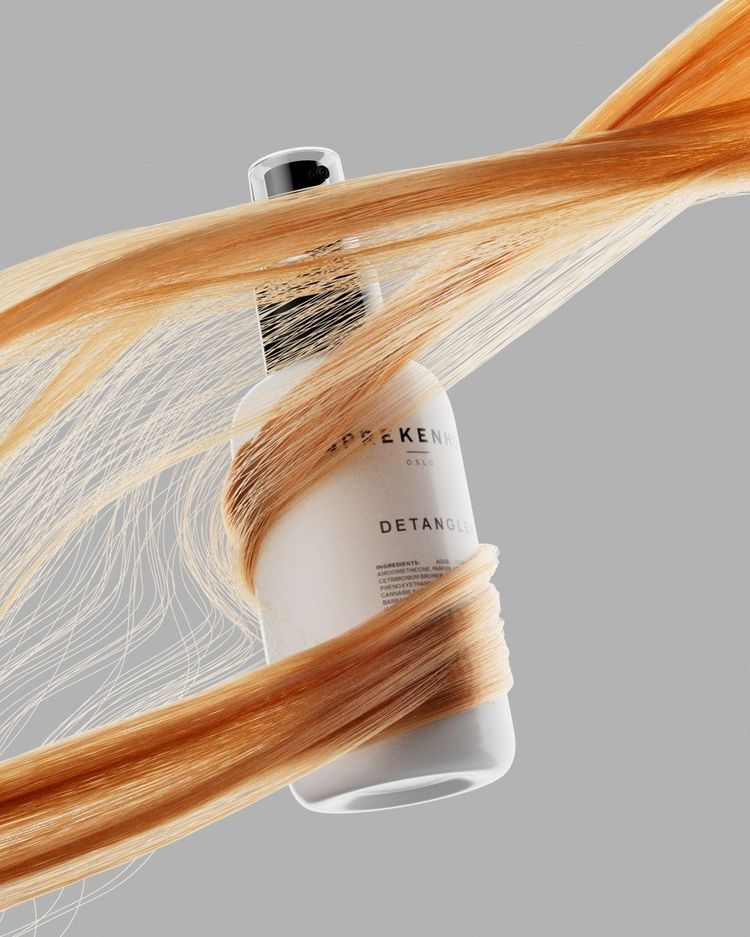
Through this blog post, I aim to share my personal experiences and shed light on the intricate relationship between shampoo and hair loss.
Join me as we navigate the realms of shampoo-induced hair loss, debunk common misconceptions, and uncover the truth behind the ingredients that may impact our precious strands.
Together, we will explore effective practices, natural alternatives, and lifestyle adjustments that can help us reclaim our crowning glory and embark on a journey towards healthier, fuller hair.
Remember, you are not alone in this battle. The road to healthier hair begins here, so let’s dive in and unlock the secrets to combatting shampoo-induced hair loss.
Table of Contents
Understanding the Relationship Between Shampoo and Your Hair Loss
While everyone’s hair is unique and reacts differently to various products, it is crucial to acknowledge that shampoos can indeed contribute to hair loss. Understanding the underlying causes and identifying the right strategies for choosing the right shampoo and caring for our hair can make a world of difference in restoring its health and vitality.
Exploring the Link Between Shampoo and Hair Loss
For starters, it’s unlikely that simple shampooing too often is going to cause hair loss. All shampoo is supposed to do is lift dirt and oil from your hair and scalp and cleanse the surfaces of your hair and skin. Cleansing works to clear your pores and hair follicles of dirt and bacteria, a net benefit to your hair.
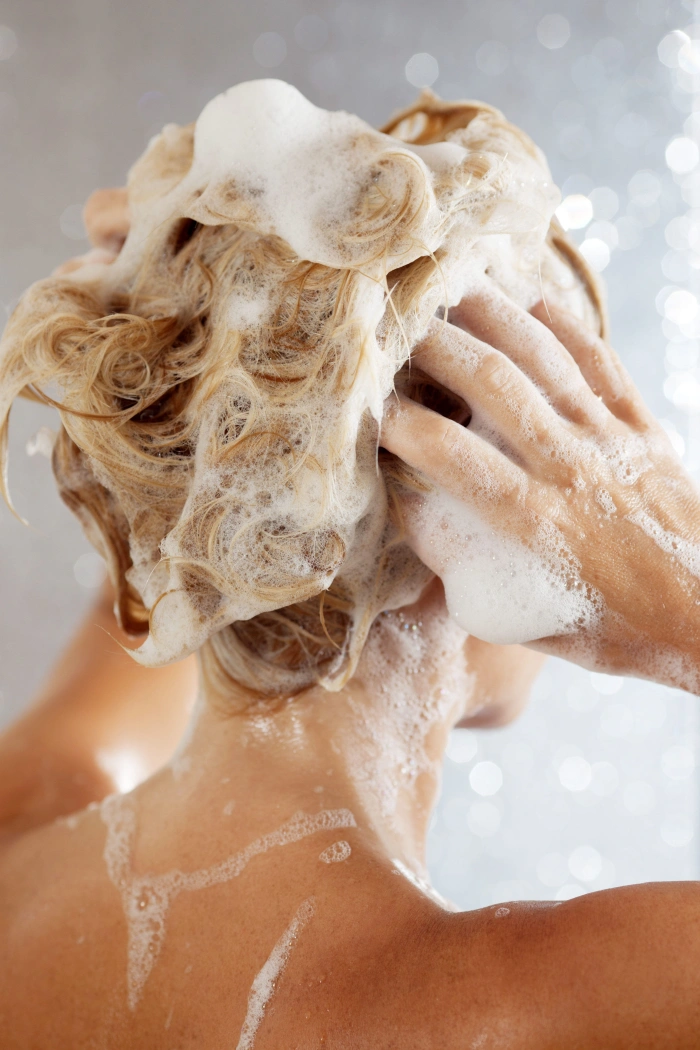
Massaging the shampoo through your hair and over your scalp is also good for your hair. Massage opens the capillaries in the scalp and encourages additional blood flow. Boosting the circulation in your scalp brings more nutrients and oxygen to your hair follicles, improving their overall health. As a result, the hair growing on your scalp will be made from thicker, stronger, more well-nourished cells.
While hair that’s visible is made up of dead cells, being healthier while it’s in the follicle and growing will help each strand stay strong and healthy-looking much longer.
Ultimately the basic function of shampoo is really good for your hair and scalp. However, there are lots of ingredients in shampoo that do more than simply cleanse your hair. Not all those ingredients are bad, and some are necessary to make a shelf-stable product that we can ship and store easily, but all of them have some effect on the shampoo and how it interacts with your skin and hair.
While shampoo is generally good for your hair, it is possible for shampoo to dry out your hair or scalp, cause damage, and make your hair more vulnerable to breakage and falling out.
That’s exactly what happened to me, and that’s exactly what I’m going to talk about below. But first I want to clarify what are the truths and what are the misconceptions about the effect of shampoo on the hair.
Debunking Common Myths About Shampoo and Hair
There are some common myths about shampoo that we should dispel before talking about how to get the most out of your shampoo and conditioner.
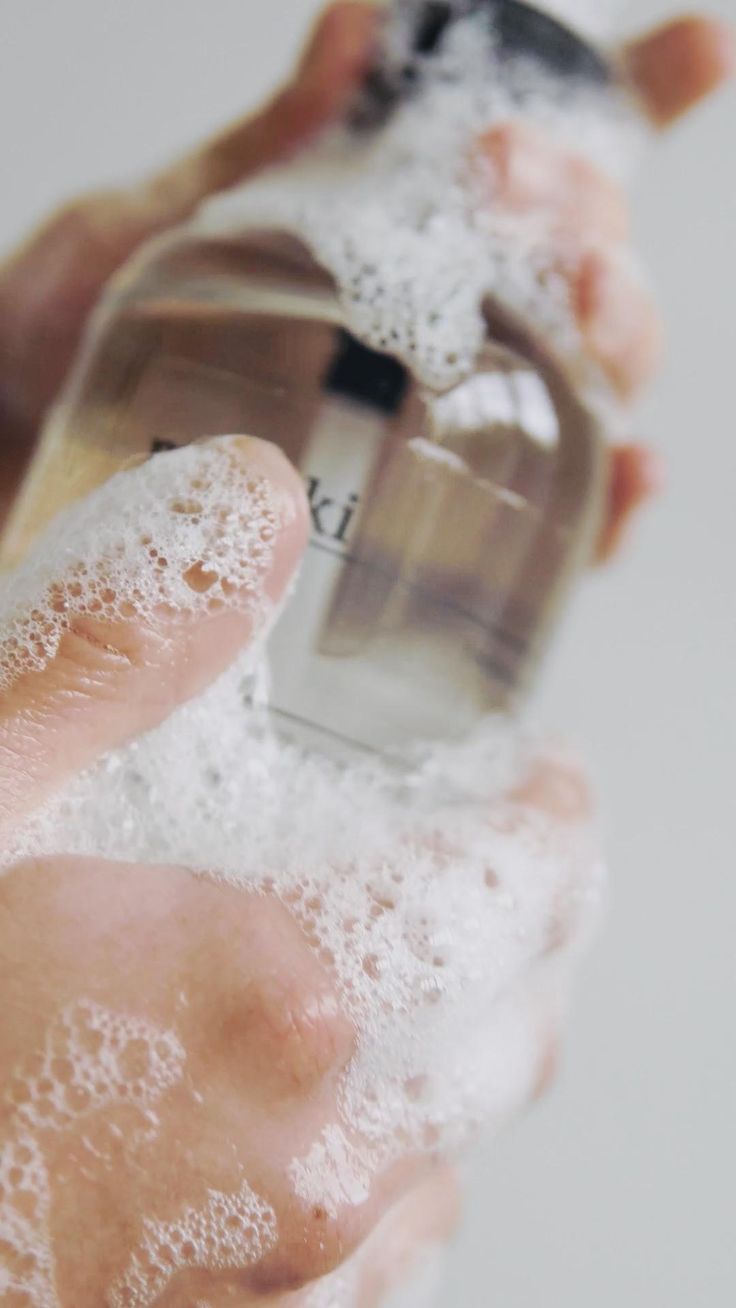
A lot of these are common ideas that you’ve probably already heard before, so let’s set the record straight so you can concentrate on the differences that matter.
No, shampoo alone does not directly cause hair loss. Hair loss is influenced by various factors such as genetics, hormones, medical conditions, and lifestyle choices. However, certain ingredients in shampoos, such as sulfates or harsh chemicals, can contribute to hair damage, breakage, and thinning if used excessively or inappropriately.
No, frequent shampooing does not directly cause hair loss. In fact, regular cleansing of the scalp and hair is necessary to maintain a healthy environment. However, excessive shampooing or using harsh shampoos can strip the hair of its natural oils and lead to dryness, brittleness, and potential breakage. It is important to find a balance and choose gentle, nourishing shampoos that suit your hair type and needs.
No, changing shampoos occasionally does not directly result in hair loss. Sudden changes in hair care products can cause temporary changes in hair texture or appearance, which may be mistaken for hair loss. It is advisable to introduce new shampoos gradually and pay attention to how your hair responds to different formulas. If you notice any adverse reactions, discontinue use and consult a dermatologist if necessary.
No, the price or specialization of a shampoo does not guarantee its effectiveness in preventing hair loss. It is important to select a shampoo that suits your hair type and addresses your specific concerns, regardless of its price. Look for shampoos with gentle ingredients, such as natural extracts and nourishing oils, that promote overall hair health. Remember, a healthy lifestyle, proper nutrition, and gentle hair care practices also play a significant role in preventing hair loss.
No, shampoos alone cannot regrow hair. Hair loss treatments or medications approved by professionals are typically recommended for stimulating hair growth. Shampoos can support hair growth by maintaining a healthy scalp and nourishing the hair follicles. They play a supportive role in maintaining a healthy scalp and promoting the health of existing hair.
By debunking these common myths, we can understand that shampoo is not the sole cause or solution for hair loss. It is essential to choose the right shampoo, practice gentle hair care, and consider other factors like genetics and lifestyle for overall hair health. If you have concerns about hair loss, consulting with a dermatologist is recommended for personalized advice and treatment options.
The Science Behind Shampoo Ingredients and Hair Health
I mentioned that there are ingredients in most shampoos that don’t have anything to do with cleansing your hair.
Some of the ingredients are used to make the final product shelf-stable so you don’t have to refrigerate it, others help it foam up, add scent, add color, or make it easier to ship and store safely for long periods of time.
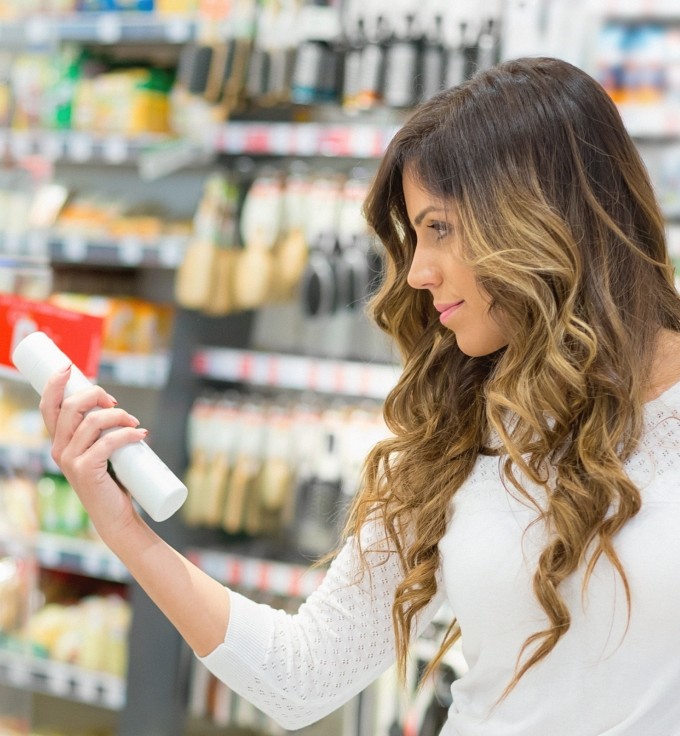
It’s difficult to find a shampoo that doesn’t include any of the ingredients on this list since using at least some of them is important to keep your shampoo safe and easy to use. Instead of trying to eliminate all of them, look for shampoos with fewer of the ingredients on this list, and further down the list of ingredients.
Unveiling Harmful Chemicals
Every component of your shampoo is on the ingredient list in order of what percentage it makes of the final formulation.
If your shampoo has a potentially damaging ingredient it should be at least 4-5 ingredients from the top of the list.
Sulfates
Sulfates are included in most shampoos because they help the shampoo create those thick bubbles and lather you want when you wash.
The two most common sulfates you’ll find are sodium lauryl sulfate and ammonium lauryl sulfate. These can also be listed as SLS and ALS.
Unfortunately, while sulfates help your shampoo feel good to apply and wash through your hair, they are a potential irritant even at low concentrations.
Cheap shampoo brands tend to have a lot of sulfates to improve the texture and foam of the shampoo, well above the concentration that has been shown irritating.
There aren’t human studies on the effect of sulfates on human hair follicles, which would be the best test of sulfates as a cause of hair loss. However, studies have been done on rats, showing the sulfates caused hair follicle damage and hair loss for them.
Sodium Chloride and Ammonia Chloride
Chances are your shampoo has sodium chloride (table salt) as a thickener if it has a large amount of sodium lauryl sulfate, or ammonia chloride if it uses ammonium lauryl sulfate. Neither of these additives are toxic, after all, you probably eat plenty of table salt every day.
However, they can be irritating in too high a concentration and are drying for your hair just like they would be for your skin. They can also be behind that itchy feeling some shampoo leaves you with.
Formaldehyde
Formaldehyde and other preservatives are important in keeping your shampoo shelf-stable. Pretty much every shampoo that doesn’t need to be refrigerated will have some preservative or another.
Formaldehyde is also antibiotic, further helping to keep your shampoo safe.
However, high concentrations of formaldehyde can cause DNA damage, including in the cells on your scalp. It really does have to be high concentrations, the first several layers of cells in your skin are already dead, so the damage caused by formaldehyde and other preservatives won’t affect them. It’s only when you get past those dead layers to skin and follicle cells that are actively dividing that it’s a problem.
Once these preservatives have penetrated that far they do cause damage, and can contribute to damaged hair and hair follicles, leading to weaker hair and hair loss.
Quaternium-15 and Parabens also fall into this category. Rather than causing DNA or other cell damage they are thought to interfere with your body’s natural hormones, which can also lead to unhealthy thin hair and hair loss.
Propylene Glycol
Propylene glycol is used in anti-freeze. It is toxic and can be irritating to your skin and hair.
Again, though, avoiding this chemical altogether is difficult in commercial shampoo because it’s needed to prevent shampoo from freezing as it’s shipped across the country.
Instead of trying to completely avoid propylene glycol in your shampoo you should look to minimize how much is included. The further down the ingredient list the better. Also, since it is highly toxic if ingested, try to keep shampoo out of your eyes and face, including the soapy water when you rinse.
Alcohol
The science is a little torn on this one. There are many different types of alcohol and many of them occur naturally in plants and your body, so just the presence of alcohol itself doesn’t mean that your shampoo is drying or damaging.
However, as anyone who’s washed with rubbing alcohol can tell you, some varieties of alcohol are very drying.
Some dermatologists and doctors recommend avoiding alcohol as much as possible in your shampoo and skin products. Others say that alcohols beginning with S and C, like Stearyl and Cetyl Alcohol, can be good for your hair.
Stearyl, Cetyl, and Cetearyl alcohol are common in shampoo. It’s up to you how much of these alcohols you’re willing to have in your shampoo, but like the other ingredients on this list, we recommend looking for shampoos with as little as possible.
Oils
Some oils are great to include in your shampoo. A lot of brands advertise plant-based oils like shea, argon, and avocado oil. These ingredients are a way to add moisturizing oils to the shampoo without weighing it down too much.
However, many shampoos also include mineral oil, lanolin, and petroleum-based oils. We’ll even give a pass to lanolin if you have coarse strand hair or curly hair since a lot of women have great results with lanolin for controlling thicker hair types.
Mineral oil and petroleum, however, weigh down your hair too much. While they won’t cause damage on their own, they can exacerbate the appearance of hair loss, damage, and thinning.
Fragrances and Color
Fragrances and colors are fine for most women, but if you suspect that you’re struggling with sensitive skin or hair it’s a good idea to avoid heavy fragrances and lots of colors since they can be sources of irritation.
Especially in cheaper shampoo brands, the heavy floral, fruity, or musky fragrance in your shampoo isn’t likely to be natural. It’s a chemical or combination of chemical additives that create the pleasant scent and color.
It’s not that those chemicals are irritating or toxic on their own, but they are one more ingredient that you might be having a negative reaction to. If you’re concerned, try switching to a non-scented brand, and avoid artificial colors, just get a sample or travel size if you can, if switching doesn’t help it’s probably not the scent and color that are the problem.
Identifying Gentle and Nourishing Formulas
When it comes to choosing a shampoo that promotes hair health and minimizes the risk of hair loss, it’s crucial to look for gentle and nourishing formulas.
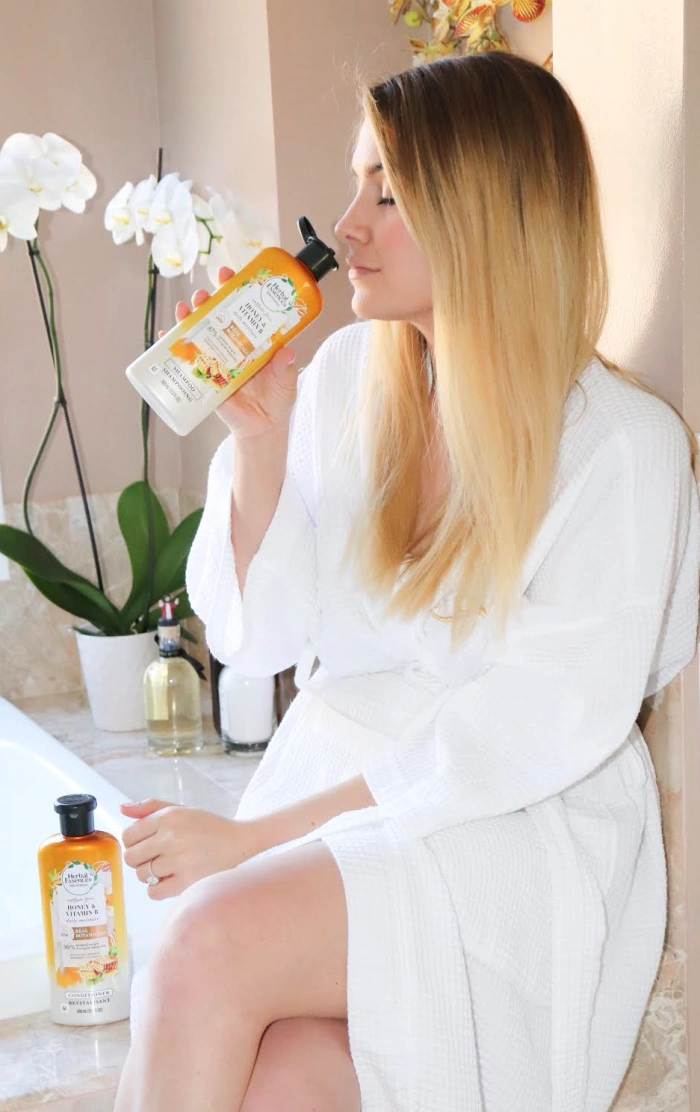
Here are key aspects to consider when identifying such shampoos:
- Sulfate-Free: Opt for shampoos that are labeled sulfate-free. Sulfates, such as sodium lauryl sulfate (SLS) or sodium laureth sulfate (SLES), are harsh detergents that can strip the hair of its natural oils, leading to dryness and potential damage. Gentle cleansers like sodium lauroyl sarcosinate or coco glucoside are milder alternatives that effectively cleanse without causing excessive dryness.
- Moisturizing Ingredients: Look for shampoos enriched with moisturizing ingredients like natural oils (argan, coconut, jojoba), shea butter, or glycerin. These ingredients help to hydrate the hair and scalp, preventing dryness and breakage. Additionally, they can improve the overall texture and shine of the hair.
- Botanical Extracts: Consider shampoos that contain botanical extracts known for their nourishing and strengthening properties. Ingredients like aloe vera, green tea extract, chamomile, or rosemary extract can provide antioxidants, vitamins, and minerals that support hair health.
- Protein-Rich Formulas: Hair is primarily composed of protein, so using shampoos that contain hydrolyzed proteins, such as keratin or silk protein, can help fortify the hair strands and prevent damage. These proteins can temporarily fill in gaps in the hair cuticle, making the hair appear smoother and reducing the risk of breakage.
- pH-Balanced: Shampoos with a pH level close to the scalp’s natural pH (around 4.5-5.5) are considered ideal. pH-balanced shampoos help maintain the scalp’s health and the integrity of the hair cuticle, reducing the risk of damage and promoting a healthy environment for hair growth.
- Allergen-Free: If you have known sensitivities or allergies to certain ingredients, make sure to choose shampoos that are free from those specific allergens. Common allergens to avoid may include fragrances, dyes, or certain botanical extracts. Always check the ingredient list or opt for hypoallergenic shampoos.
Remember, everyone’s hair is unique, and what works for one person may not work for another. It’s important to experiment and find a shampoo that suits your hair type, concerns, and personal preferences. Pay attention to how your hair and scalp respond to different formulas, and make adjustments as needed.
In conclusion, gentle and nourishing shampoos can play a vital role in maintaining hair health and minimizing the risk of hair loss. By selecting shampoos that are sulfate-free, moisturizing, enriched with botanical extracts, protein-rich, pH-balanced, and allergen-free, you can provide your hair with the care it deserves and support its overall health and vitality.
Factors That Contribute to Hair Loss
Hair loss is a multifaceted issue influenced by various factors, including genetic predisposition, hormonal imbalances, stress, diet, and lifestyle choices.
We will now explore two key factors that contribute to hair loss: genetic predisposition and hormonal factors, as well as the impact of stress, diet, and lifestyle choices.
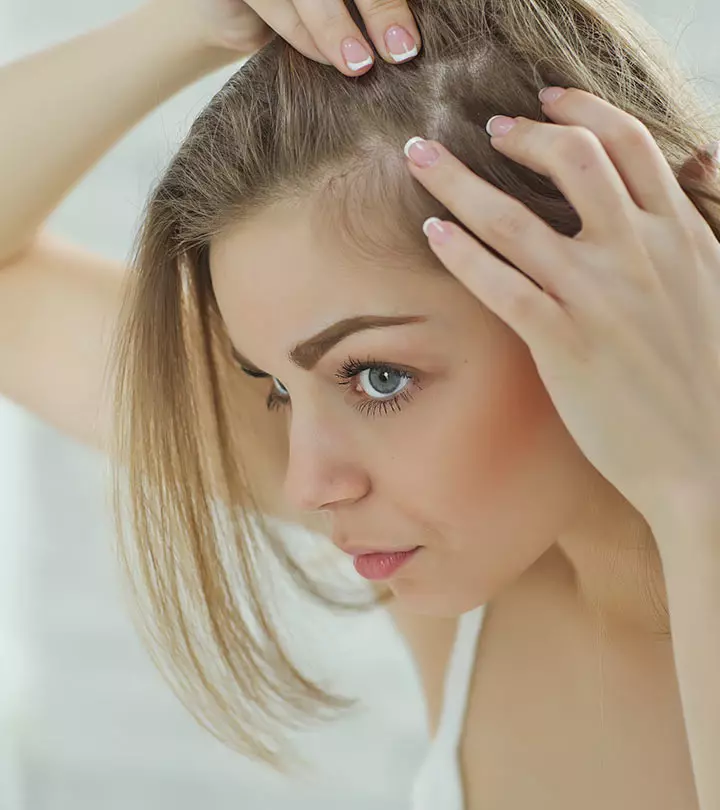
Drawing from personal experiences, we aim to shed light on the complexities of hair loss and provide insights on how to navigate these factors for healthier, fuller hair.
Genetic Predisposition and Hormonal Factors
Hair loss can often be attributed to a combination of genetic predisposition and hormonal factors. Understanding these influences is crucial in comprehending the complexity of hair loss. Let’s explore these factors:
- Genetic Predisposition: Many individuals inherit a genetic predisposition to hair loss, commonly referred to as male or female pattern baldness. This type of hair loss is caused by a combination of genetic factors and hormone sensitivity. If you have a family history of hair loss, it increases the likelihood of experiencing similar patterns.
- Hormonal Factors: Hormones play a significant role in hair growth and shedding. Hormonal imbalances, such as fluctuations in androgen levels (including dihydrotestosterone or DHT), can lead to hair follicle miniaturization and eventually hair loss. Conditions like polycystic ovary syndrome (PCOS) can contribute to hormonal imbalances and subsequent hair thinning.
Stress, Diet, and Lifestyle Choices
Stress, diet, and lifestyle choices are additional factors that can contribute to hair loss. As a blogger who has personally experienced the impact of these factors, let’s delve into their significance:
- Stress: Excessive stress can disrupt the hair growth cycle and trigger hair shedding. Stress-induced hair loss, known as telogen effluvium, occurs when a significant number of hair follicles enter the resting (telogen) phase prematurely. Managing stress through relaxation techniques, exercise, and seeking emotional support can help minimize its effects on hair health.
- Diet: Nutritional deficiencies, particularly inadequate intake of essential vitamins, minerals, and proteins, can impact hair health. A diet lacking in nutrients like iron, biotin, zinc, and vitamin D may contribute to hair thinning and breakage. Incorporating a balanced diet rich in fruits, vegetables, lean proteins, and healthy fats can provide the necessary nutrients for strong and vibrant hair.
- Lifestyle Choices: Certain lifestyle choices, such as smoking, excessive alcohol consumption, and poor sleep habits, can negatively affect hair health. Smoking restricts blood flow to the hair follicles, while alcohol can dehydrate the body and impact nutrient absorption. Additionally, inadequate sleep can disrupt hormonal balance and impair overall hair health. Making conscious choices to quit smoking, moderate alcohol intake, and prioritize sufficient sleep can contribute to healthier hair.
It is important to note that while genetic predisposition and hormonal factors may be beyond our control, managing stress, adopting a nutrient-rich diet, and making positive lifestyle choices can help mitigate their impact on hair loss. Embracing stress management techniques, seeking professional guidance, and focusing on self-care are essential steps in maintaining optimal hair health.
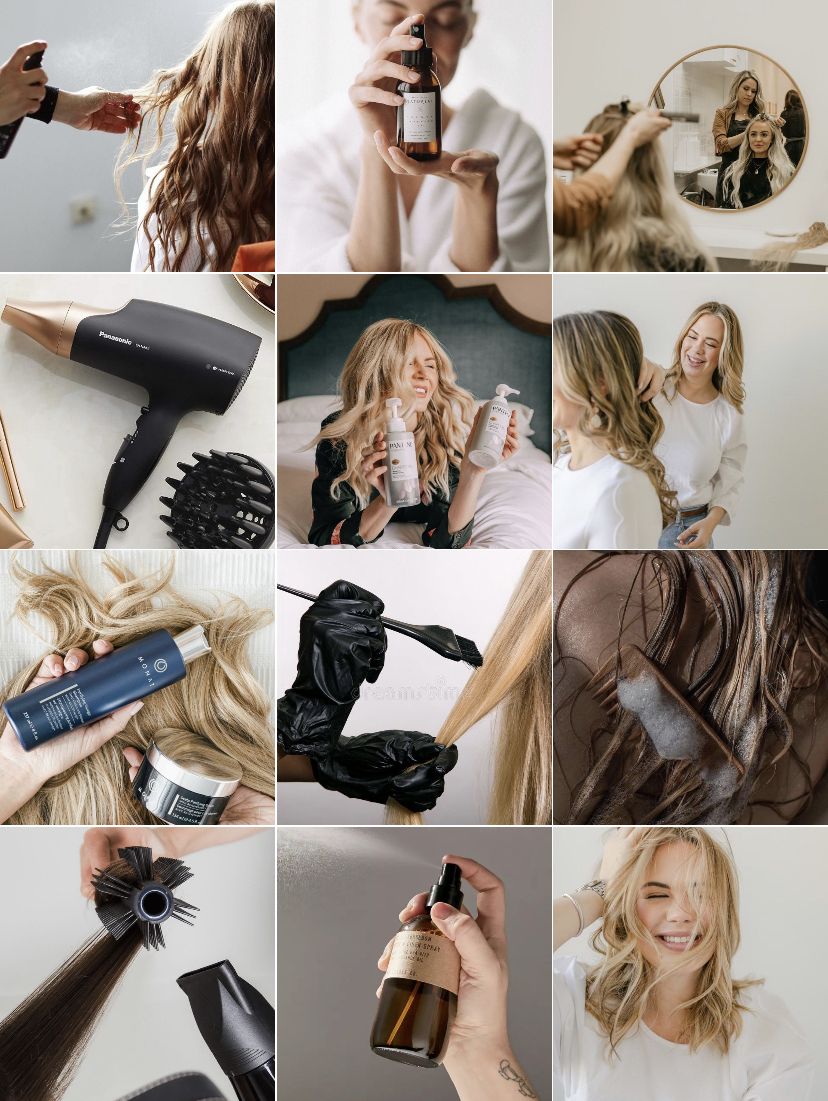
Remember, every individual’s experience with hair loss is unique, and seeking professional advice from a dermatologist or trichologist can provide personalized insights and potential treatment options. By understanding and addressing these contributing factors, we can take proactive steps towards preserving and promoting the health of our hair.
The Role of Shampoo in Maintaining Hair Health
As a woman who has personally experienced the pitfalls of overwashing and eventually found the balance for optimal hair care, I understand the importance of understanding the role of shampoo in maintaining hair health. Let’s delve into these two aspects.
Cleansing vs. Overwashing
Shampoo serves the primary purpose of cleansing the scalp and removing dirt, excess oil, and product buildup. However, there is a fine line between cleansing and overwashing. I learned the hard way that overwashing can strip the hair of its natural oils, leading to dryness, irritation, and potential hair damage. It is crucial to find the right frequency of shampooing that suits your hair type and scalp condition, allowing for a healthy balance between cleanliness and preserving the hair’s natural oils.
Finding the Balance for Optimal Hair Care
After struggling with overwashing, I embarked on a journey to find the perfect balance for my hair care routine. I discovered that incorporating a few key practices can make a significant difference. Firstly, I reduced the frequency of shampooing to allow my scalp to regulate its oil production naturally. Instead of daily washing, I opted for every other day or even a couple of times a week, depending on my hair’s needs.
How to Get the Most from Your Shampoo
Once you’ve picked a good shampoo option and minimized the potentially damaging ingredients, it’s still important to use your shampoo and other hair products properly to make sure you’re getting good results and protecting your hair.
Take Your Time
It’s hard to fit extra time into your busy modern schedule, we’re all running from task to task most of the day, but if you’re worried about the health of your hair it’s important to find a little extra time to take care of it.

Scalp massage is one of the best things you can do to combat hair loss and hair thinning. Since it increases circulation and brings more oxygen and nutrients to your scalp it has an overall beneficial effect.
One of the easiest ways to incorporate more scalp massage in your daily routine is to take some extra time when you’re shampooing your hair.
In addition to giving you the beneficial effects of the massage, taking the extra time will also help you thoroughly cleanse your hair and scalp, eliminating any dirt and debris that may have made their way into your hair follicles or pores.
Try Shaking Up Your Routine
You probably have a schedule for when you shower through the week or through the day. Showering might be part of your morning or evening routines or something you do once every couple of days.
The right grooming schedule is different for everyone. Everybody is different and of course, the products you use and your routine have an impact on your hair’s appearance and health. If you’re concerned about your hair a simple first step is to change your routine for a week or two and see if that helps.
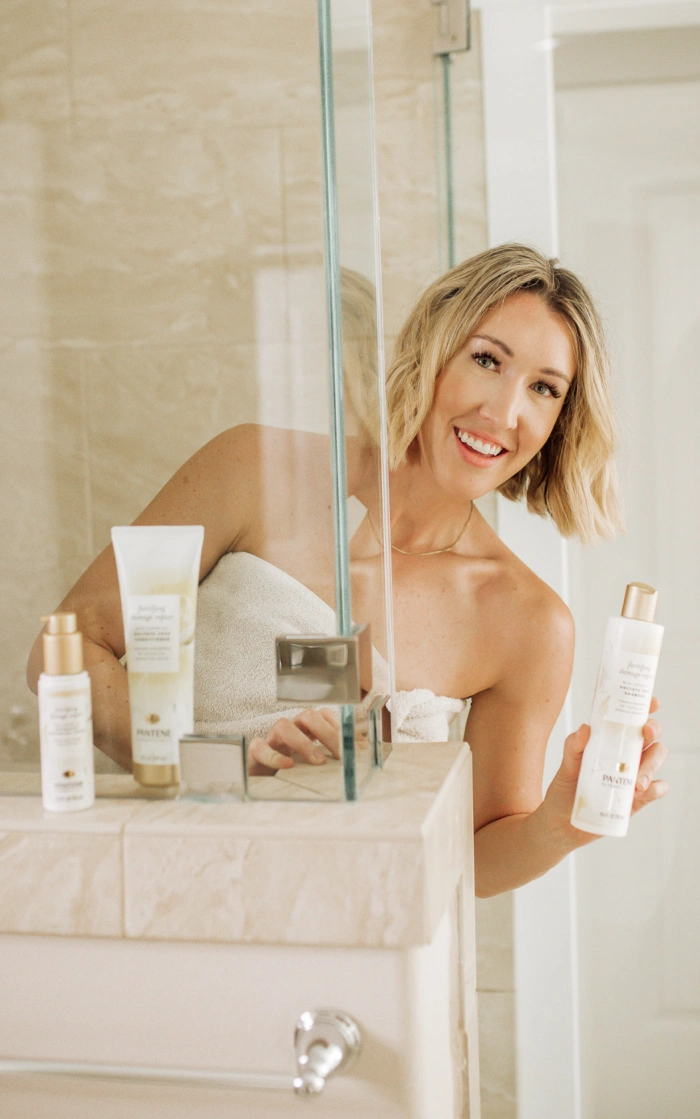
Try a routine that’s significantly different from what you’re doing now. Maybe waiting a few extra days will give extra life and body to your hair, or washing every day will help eliminate the natural dirt and grease on your scalp and let your hair grow free and well.
Remember, give it at least a week to work. You can always go back to your old routine if the change doesn’t make a difference.
Avoid 2 in 1 Shampoo and Conditioner Products
Shampoo and Conditioner 2 in 1s can seem like a great way to save time and money. However, shampoo is meant to wash completely out of your hair, while conditioners are designed to protect your hair and do leave some residue between washes.
No 2 in 1 formulation can control exactly what gets left in and on your hair and what washes away, so while you might be getting the conditioning and moisturizing effect of the conditioner, you’re likely also keeping the cleansers and other ingredients on your hair longer than they should be.
Product build-up can be challenging with many shampoos, but 2 in 1 formulas are particularly notorious for leaving more on your hair than they should and leaving it limp and stringing looking to boot.
Use a Leave-in Conditioner
In addition to using regular shampoo and conditioner, it can help to add a leave-in conditioner on top of your other products, especially if your hair is more than 2-3 inches long. This gives you another layer of protection and hair-smoothing power and can help prevent problems like split ends and breakage.
Breakage makes your hair look frizzy. If it gets bad enough it can also mimic the appearance of hair loss, even when your hair growth and hair follicles are fine.
Use Warm Water, not Cold
Rinsing with cold water at the end of your shower is often touted as a way to make your hair smoother and shinier, closing the cuticle and smoothing each hair strand, much like cold water can tighten and close your pores.
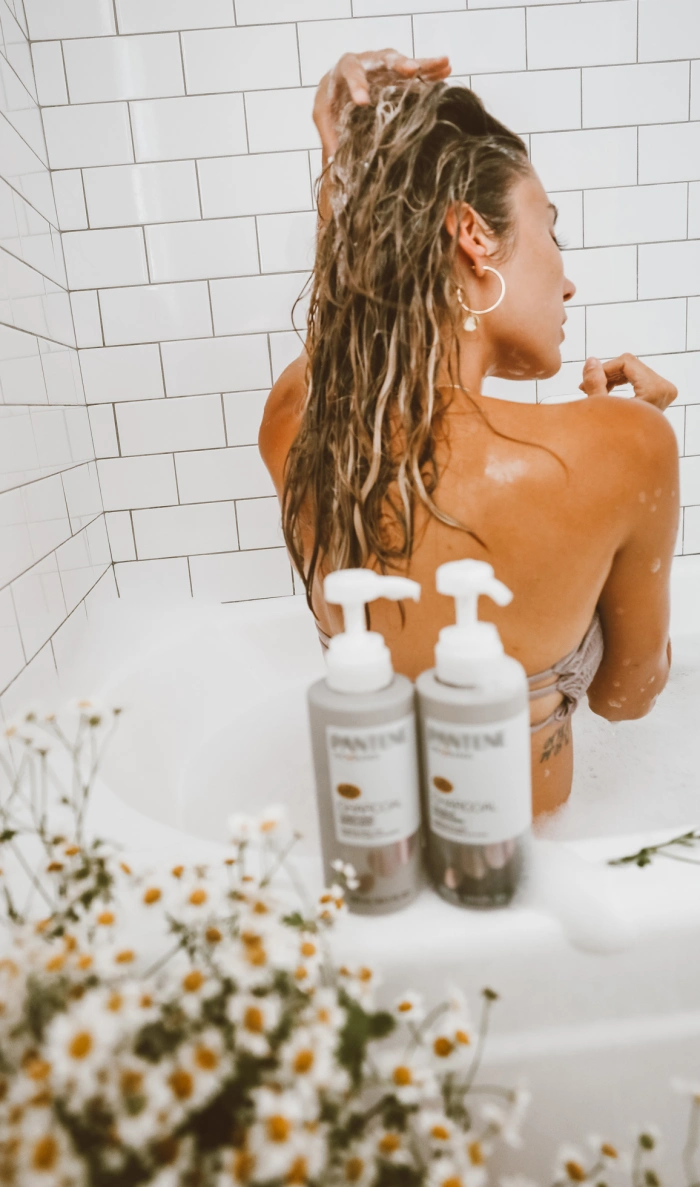
If you’re using a good conditioner you don’t need anything else to smooth each hair strand. The cold water might not damage your hair, but it does discourage blood flow to your scalp.
If you really want to finish with a cold rinse, especially to help wake up in the morning, go ahead. Just avoid getting the cold water directly on your scalp.
Seeking Professional Advice: When to Consult a Dermatologist
As a woman who has personally experienced the distress of excessive hair loss and eventually found the path to a proper diagnosis and treatment, I understand the significance of seeking professional advice. Let’s delve into these two aspects.
Recognizing Signs of Excessive Hair Loss
It is essential to be vigilant and recognize the signs that indicate excessive hair loss. In my journey, I noticed an alarming increase in daily hair shedding, noticeable thinning of my hairline, and the appearance of bald patches.
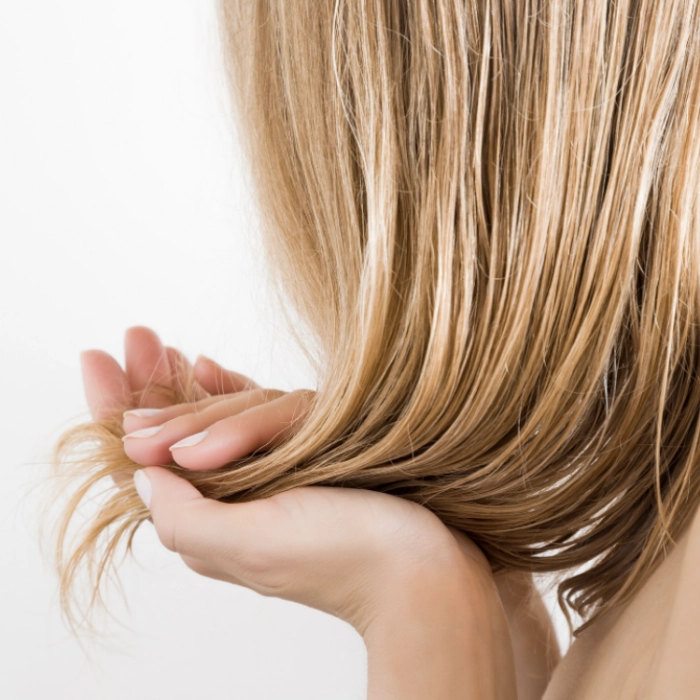
These were clear indicators that something beyond the normal shedding process was occurring. Other signs to watch out for include a receding hairline, widening part, and a significant decrease in hair volume. Being aware of these signs can prompt you to take proactive steps towards seeking professional guidance.
Getting a Proper Diagnosis and Treatment
Seeking the expertise of a dermatologist is crucial for obtaining a proper diagnosis and developing an effective treatment plan. Upon consulting a dermatologist, I underwent a thorough examination of my scalp and hair follicles. The dermatologist assessed my medical history, lifestyle factors, and conducted relevant tests to rule out underlying conditions such as hormonal imbalances, nutritional deficiencies, or scalp infections.
Based on the diagnosis, a personalized treatment plan was formulated. In my case, the dermatologist recommended a combination of treatments, including topical medications, oral supplements, and lifestyle modifications. These interventions targeted the root cause of my hair loss and provided the best chances for hair regrowth and maintenance.
Nurturing Your Hair with Care
I learned to choose shampoos specifically formulated for my hair type, focusing on gentle and nourishing formulas. By avoiding harsh sulfates and opting for moisturizing ingredients, botanical extracts, and protein-rich formulas, I was able to cleanse my hair effectively without stripping away its natural moisture.
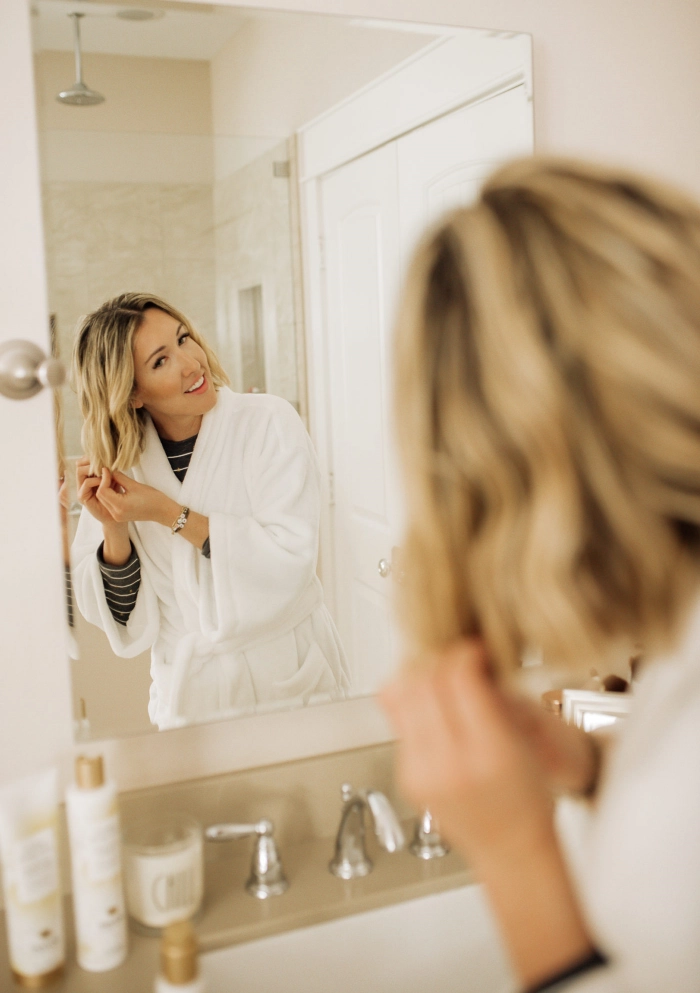
The Importance of a Holistic Approach
Furthermore, I embraced a holistic approach to hair care, paying attention to my diet, lifestyle choices, and stress management. Consuming a nutrient-rich diet, staying hydrated, exercising regularly, and managing stress levels all played crucial roles in promoting overall hair health.
Achieving Healthy and Beautiful Hair
Through this journey, I discovered that finding the balance for optimal hair care is not a one-size-fits-all approach. It requires experimentation, understanding your hair’s unique needs, and listening to your scalp’s signals. By striking the right balance between cleansing and preserving the hair’s natural oils, along with a holistic approach to hair care, I was able to achieve healthier, more manageable hair.
Conclusion
While shampoo itself may not directly cause hair loss, the ingredients and improper hair care practices associated with certain shampoos can contribute to hair thinning and breakage. It is essential to be aware of the chemicals present in your shampoo and opt for gentle formulas that promote hair health. Additionally, maintaining a balanced diet, managing stress, and adopting a holistic approach to hair care are crucial steps in minimizing hair loss and preserving the vitality of your hair. Remember, seeking professional advice from a dermatologist can provide personalized insights and solutions if you are experiencing excessive hair loss. By making informed choices, embracing healthy habits, and nurturing your hair with care, you can maintain a beautiful and resilient mane that reflects your overall well-being.
Understanding the role of shampoo in maintaining hair health is essential for every woman seeking to achieve optimal hair care. By distinguishing between cleansing and overwashing, and finding the balance that works for you, you can ensure that your hair remains clean, nourished, and in its best possible condition. Remember, everyone’s hair is unique, so take the time to explore and adapt your hair care routine to suit your specific needs and achieve optimal hair health.